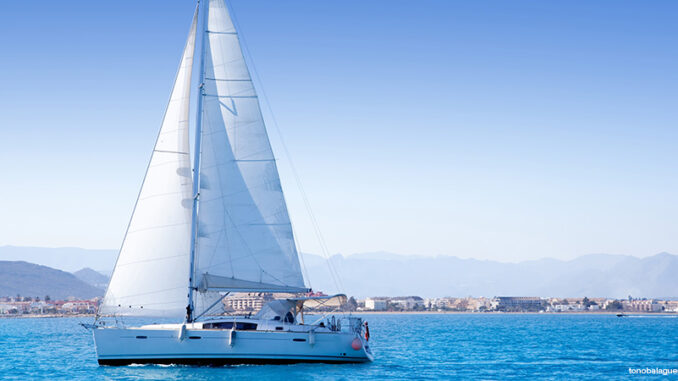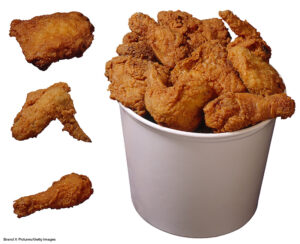
Sick Migrants Face Deportation
In its latest blow to the immigrant community, the Trump administration revealed last week that immigrants with serious medical conditions will no longer be allowed to extend their stay in the United States to receive treatment, and will face immediate deportation. There was no official announcement to the public about this policy change. Instead, the affected immigrants received letters informing them that they won’t be allowed to remain any longer and that they have 33 days to leave the country.
Before last week, the current policy for immigrants who had come to the United States seeking treatment for extreme medical need allowed them to stay for two years to receive the help they needed. The program was called “medical deferred action,” and its goal was to help people coming from countries where the treatment for their illness doesn’t exist. Now, however, people facing serious medical conditions face deportation. Additionally, instead of requests for deferred medical action being handled by U.S. Customs and Immigration Services, as they were in the past, they will now be reviewed by U.S. Immigration and Customs Enforcement (ICE).
Many of the people who will be affected by this change are children with deadly illnesses such as cancer who may not survive if they are sent back to countries that don’t have medical care for their conditions. Even so, if they don’t leave on their own within the 33-day period, they will be removed by ICE and forbidden to return for several years.
What Do You Think? Write a letter to your representative explaining why you think they should support or oppose the Trump administration’s decision to end the medical deferred action program for immigrants. Give at least three reasons to support your position.
Planes, Trains, and . . . Boats?
Think you’re too young to do anything about climate change? Think again. Sixteen-year-old Greta Thunberg of Sweden is a climate change activist who is known all over the world. Last week, she made headlines once again when she arrived in Manhattan to attend the United Nations Climate Action Summit. (She will join protestors before addressing the summit.) But even more newsworthy than her arrival in the U.S. was the way that she got here: not by plane, but by boat. Why? Because commercial airplanes release greenhouse gas emissions. Thunberg told reporters that she wanted to make a statement about how important it is to reduce carbon emissions. In other words, she wanted to practice what she preaches.
To be fair, this was no regular boat Thunberg used for her two-week journey across the Atlantic Ocean: it was an emission-free racing yacht.
But this decision was only the latest on Thunberg’s impressive resume of achievements. Despite being diagnosed in childhood with Asperger’s, obsessive-compulsive disorder, and selective mutism, Thunberg first made headlines last year when she began skipping school to protest–alone–outside the Swedish parliament building. Since then, Thunberg’s ideas have spread rapidly, and students across the world now leave school to protest on Fridays. Thunberg has also been nominated for a Nobel Peace Prize and is an inspiration to young climate activists everywhere.
Dig Deeper Okay, so you probably can’t charter a yacht for your next vacation. But using Internet resources, come up with a list of five to ten easy things you can do every day that reduce carbon emissions.
Tastes Like Chicken
Are you or any of your friends vegetarian? If so, we’ve got good news for you. Kentucky Fried Chicken, or KFC, began introducing meatless chicken to its menu last Tuesday. The new items, which include nuggets and boneless wings, are called “KFC Beyond Fried Chicken” and are entirely plant-based, though the company says they retain the flavor of the original recipe.
So why is a restaurant whose entire business model based on chicken turning to meat alternatives? Because the move among Americans toward vegetarianism and veganism is at an all-time high. In fact, the U.S. spent millions on meat substitutes last year, as people begin to realize both the positive health and environmental impacts of a meat-free lifestyle.

But don’t rush out for your meatless chicken wings just yet. KFC tested the new products only at one specific store in Smyrna, a suburb of Atlanta. But “Beyond Fried Chicken” was so popular that customers literally lined up to try it, and the store sold out on the very first day: in fact, the restaurant sold as much of the chicken-substitute in a single day as it usually sells of popcorn chicken in a week. KFC hopes feedback from the test market will continue to be positive and will eventually lead to a national roll-out.
Dig Deeper KFC is not the only fast-food chain to introduce vegetarian versions of its favorite dishes lately. Use Internet resources to find out more about other popular chains–such as Burger King, White Castle, and Little Caeser’s–who’ve added veggie options recently. Write a short paragraph about what you find.
A Sea of Stone
It’s well known that Australia’s Great Barrier Reef–the world’s largest coral reef system–is dying off at a terrifying rate. In fact, nearly half of it has already been lost since 1985 due to climate change. This is because the warming ocean causes coral bleaching, which is when the organisms that inhabit the coral begin to die off, leaving the coral to go completely white and die as well. What might the Great Barrier Reef? How about a volcanic eruption under the surface of the ocean?
Turns out, this isn’t such a far-fetched idea. Recently, an explosion from an underwater volcano near the island of Tonga produced a giant, 58-square-mile sheet of pumice, which is a roughly-textured, porous volcanic rock. (Have you ever heard of a pumice stone? Yes, that’s the same thing.) To get a better sense of how big that is: it’s the size of about 20,000 football fields, and larger than the island of Manhattan. And it’s floating toward the coast of Australia. It’s estimated to arrive in about seven months to a year.
So what in the world does this have to do with restoring the Barrier Reef? Because pumice is so porous (meaning full of holes), it floats easily. During the months it takes to travel to Australia, it will pick up all kinds of algae and other organisms, transferring them from the deep sea to the barrier reef when it arrives. There, scientists hope, the pumice may take hold, spread, and help to regenerate the Reef.
